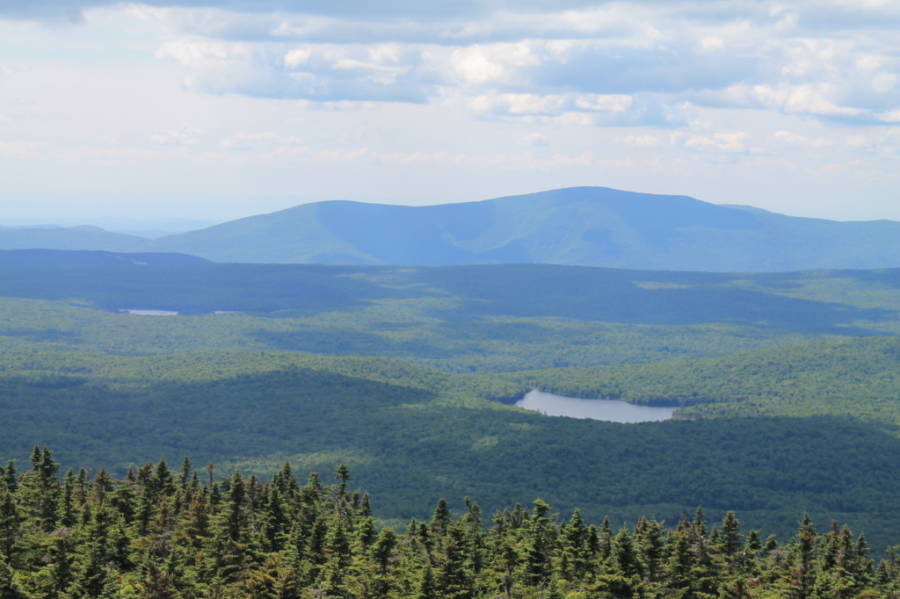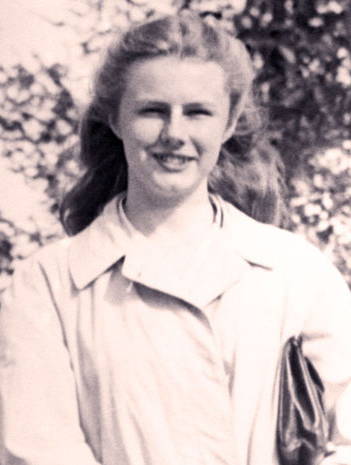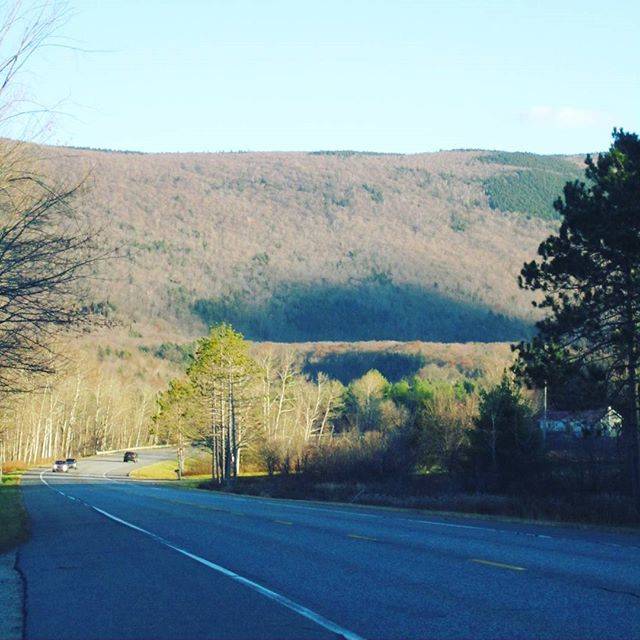Some suspect a serial killer while others point a finger at the paranormal, but nobody has been able to fully explain the mysterious disappearances from Vermont's Bennington Triangle and Glastenbury Mountain.
Followers of folklore and aficionados of the paranormal are likely familiar with the Bermuda Triangle and perhaps even southeastern Massachusetts’ Bridgewater Triangle. But one lesser-known relative of these areas holds more than its fair share of tantalizing mysteries: the Bennington Triangle of Vermont.
Dubbed as such by author Joseph A. Citro, the Bennington Triangle is a loosely-defined area that encompasses the ghost town of Glastenbury, once a small logging community centered on the eponymous mountain in southwestern Vermont.

Andy ArthurGrout Pond and Glastenbury Mountain, at the heart of the Bennington Triangle.
Abandoned at the end of the 19th century after the end of the logging boom, the greater Glastenbury area is now mostly untouched, pristine wilderness and is considered remote even by Vermont standards.
Starting with a string of missing persons over 70 years ago, the now-abandoned town has been the eerie setting of numerous unexplained disappearances, unsolved murders, and bizarre sightings that continue to this day.
A String Of Disappearances Begin In The Mid 20th Century
In 1945, a five-year span of disappearances began in the Bennington Triangle with the vanishing of Middie Rivers. A 74-year-old local hunting guide, Rivers led a party of four hunters around the area of Hell Hollow in the southwest woods of Glastenbury before he was suddenly lost.
After an unsuccessful initial search, many still believed that this knowledgeable woodsman would be able to survive and soon surface in town. However, this was not the case. Soon, more than 300 concerned locals and U.S. Army soldiers dispatched from Massachusetts’ Fort Devens combed through the vast wilderness for eight days, turning up not a single shred of evidence as to the whereabouts of Rivers.

Wikimedia CommonsPaula Welden disappeared around Glastenbury Mountain in December 1946.
The following year saw arguably the most infamous missing persons case in Vermont history: the disappearance of Paula Welden. Welden was an 18-year-old student at Bennington College who decided to hike a leg of the Long Trail during Thanksgiving break when most of her peers had returned home for the holiday.
Last seen on Sunday, December 1, 1946, wearing easy-to-spot red and entering the Long Trail near Glastenbury Mountain, Welden never showed up for her Monday classes, spurring a massive search party of more than 1,000 people and a reward of $5,000.
Despite the large turnout, numerous aircraft utilized, and variety of assisting law enforcement departments, no clues to her fate were ever discovered.
Many, including Welden’s father, criticized the authorities’ lack of sophisticated methods in handling the case, which actually served as the catalyst for the founding of the Vermont State Police seven months later. The case remains open to this day.
Exactly three years to the day after the vanishing of Paula Weldon, the Bennington Triangle saw one of its more seemingly supernatural disappearances. That day, a 68-year-old man named James E. Tedford boarded a bus to Bennington after visiting relatives in St. Albans, Vermont. Numerous eyewitnesses, including the driver, later confirmed that Tedford had been in his seat as late as the last stop before Bennington. Yet when the bus finally pulled into Bennington, Tedford was nowhere to be found.
After he implausibly vanished into thin air while inside a moving vehicle, baffled passengers noted that Tedford’s luggage and an open bus timetable remained on his seat. If the witnesses are correct, Tedford would have disappeared from his seat as the bus was traveling down Route 7 through the Bennington Triangle.

Andy ArthurVermont Route 7, north of Glastenbury.
Nearly a year later in mid-October 1950, eight-year-old Paul Jepson went missing. He was last seen happily playing in the family pickup truck by his mother, who left to tend to pigs at the dump where she and her husband were caretakers. Then he vanished without a trace.
In addition to the hundreds assembled for a search party, a New Hampshire sheriff brought in a bloodhound to sniff out the missing boy. The dog was able to pick up his scent but abruptly lost the trail at a nearby crossroads, suggesting a possible abduction by a motorist.
As the case dragged on without resolution, some suggested that Jepson met an early demise at the hands of his parents and was dinner for the pigs. But, in keeping with the eerie feeling of the Bennington Triangle, the boy’s father told the Albany Times Union that it was perhaps “the lure of the mountains” that pulled in his missing son, as the boy had “talked of nothing else for days” prior to the disappearance.
Only about two weeks later, 53-year-old Frieda Langer, an experienced hiker and survivalist familiar with the area, went missing on the Somerset area of the Long Trail bordering east Glastenbury.
After hiking a brief half-mile with her cousin Herbert Eisner, Langer fell into a stream and set back to their camp to change her clothes, where her husband was resting with a hurt knee. But neither her husband nor her cousin ever saw her again.
Helicopters from the Connecticut Coast Guard and U.S. Army in Massachusetts as well as local aircraft from citizens and the Vermont Aeronautics Commission helped search for Langer. As many as 400 people, including the Massachusetts National Guard, meticulously searched the surrounding areas yet found nothing.
But soon they did find something and this became the only known disappearance of the Bennington Triangle where a body has turned up. Six months after she went missing, Langer’s corpse was found near the Somerset Reservoir — curiously, an open area that had been searched extensively numerous times in the previous months.
Yet even with a body, the case saw little resolution. The body had decayed so badly that no cause of death could be determined, only fueling further speculation about what kind of disturbing end she might have met.
Theories About The Bennington Triangle

Rich Moffitt/Flickr
The intriguing mysteries and unexplained events associated with the Bennington Triangle have caused many to speculate wildly about the possibility of nefarious and perhaps paranormal forces at work, a notion bolstered by alleged UFO and Bigfoot sightings in the region.
Others believe that the burst of missing persons between 1945 and 1950 may have been the work of a serial killer. But the sheer lack of evidence to back this up as well as the variety in the victims’ ages and genders (defying the usual patterns of serial killers) likely rules out that theory as well.
Others still contend that the disappeared met their demise at the claws of an indigenous mountain cat such as a lynx, bobcat, or cougar. However, bobcat and lynx are not known to be aggressive to humans, and mountain lions have not been credibly sighted since before 1940.
All in all, when trying to tie the disappearances together in hopes of discovering a solution to the mysteries, there is little to go on. The only known similarities between the most well-documented cases in the Bennington Triangle are the close proximity of the disappearances, the time of day when most were last seen (between 3 p.m. and 4 p.m.), and the time of year when most were last seen (the final three months of the year).
And with little in the way of evidence, paranormal theories concerning the cases have taken hold. For those interested in the paranormal, such theories dovetail with other, more recent odd occurrences in the Bennington Triangle area.
These occurences include terrifying voices allegedly showing up on dead-air radio, sightings of mysterious figures, unexplained navigation mishaps, and planes that mysteriously crashed.
Thus it’s no surprise that the Bennington Triangle attracts those with a penchant for the eerie to this day.
After this look at the mysterious disappearances of Bennington Triangle and Glastenbury Mountain, have a look at some baffling mysteries that’ll keep you up at night as well as some haunting unsolved murders.





